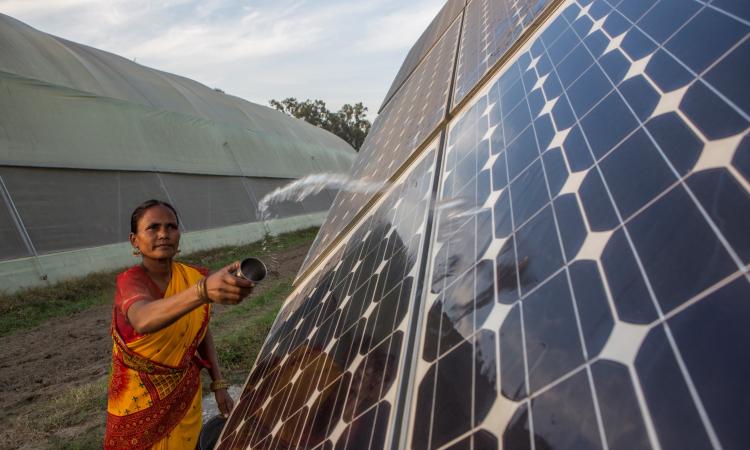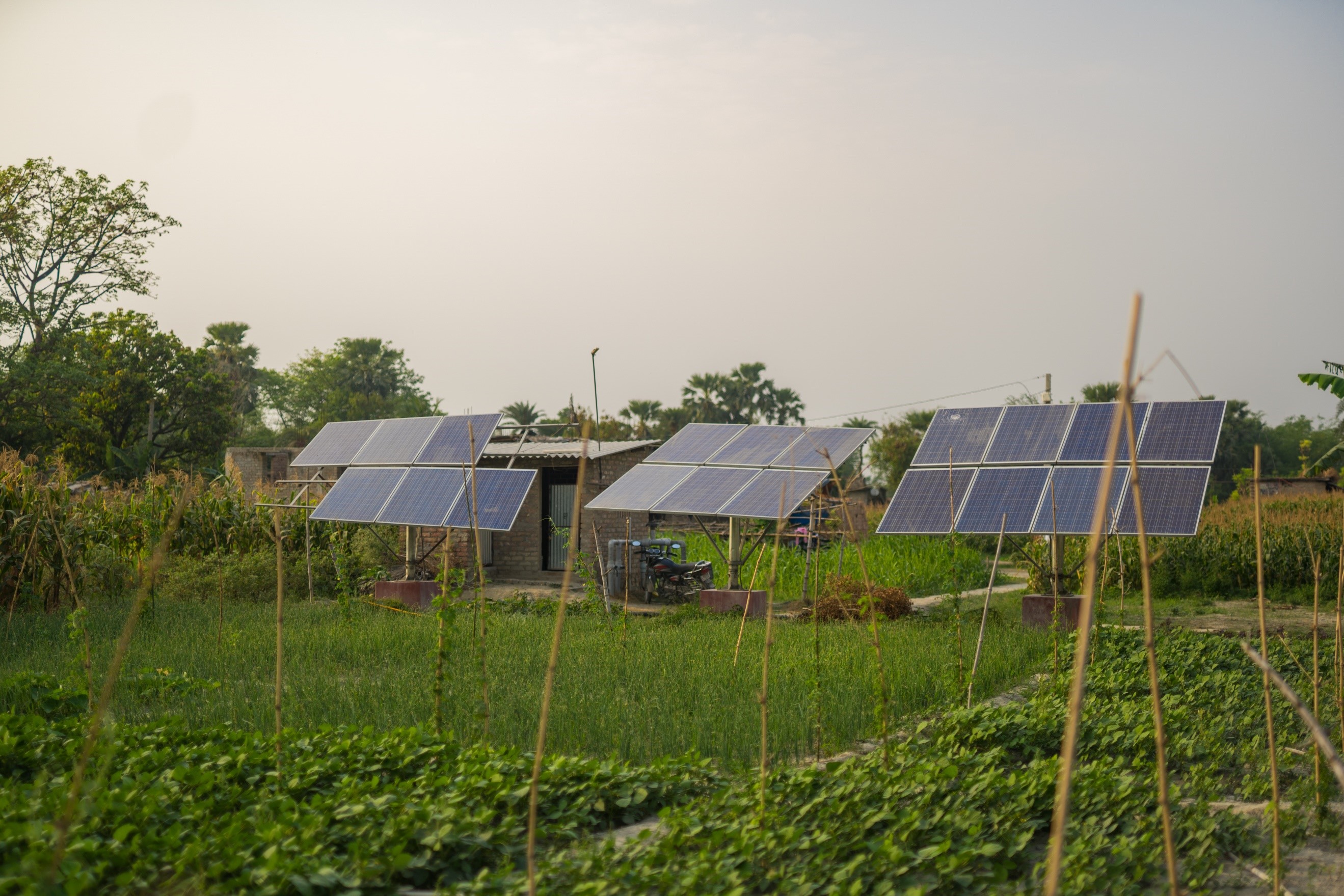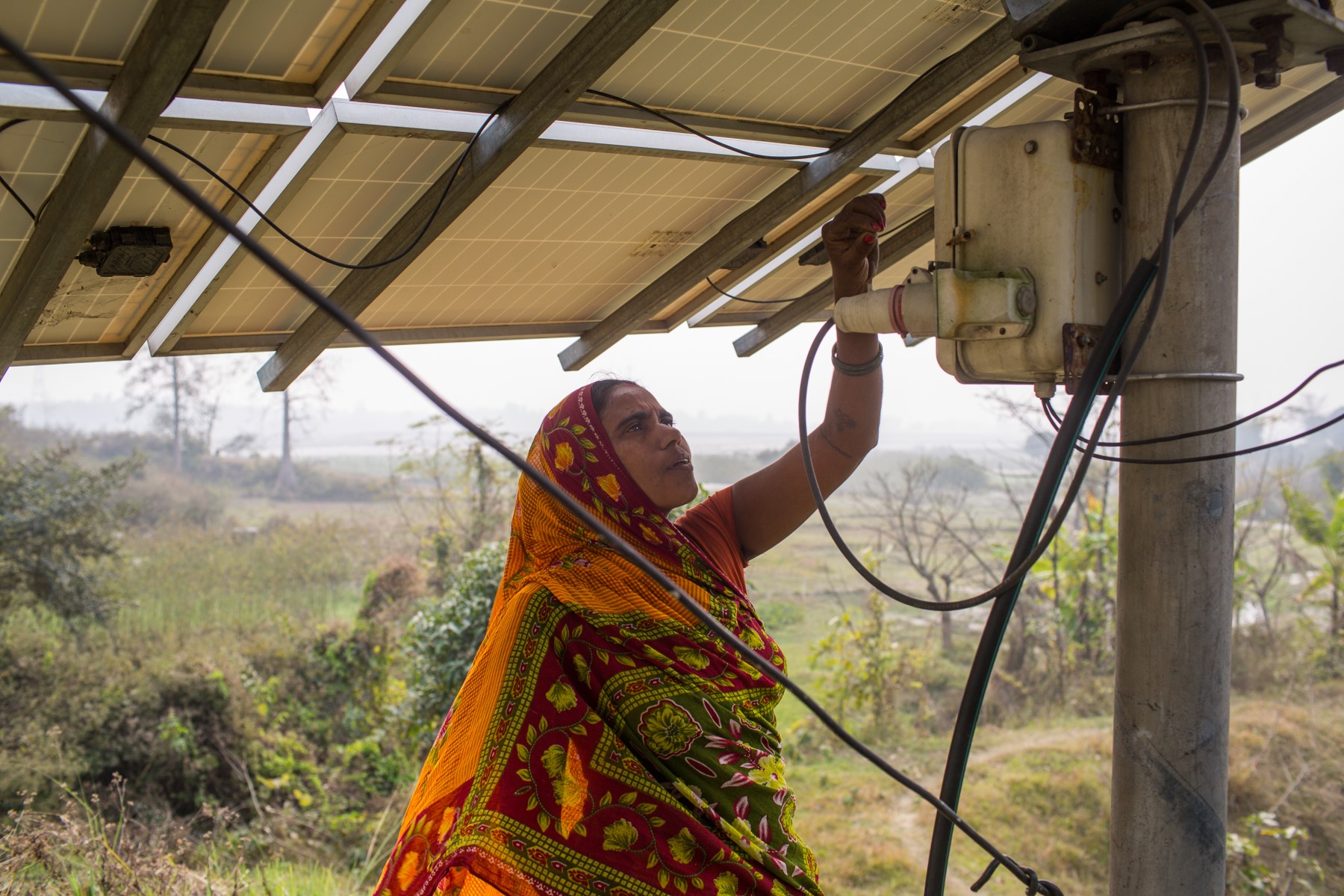
Touted as the one of the most innovative technologies in agriculture, solar irrigation pumps have been accelerating India’s renewable energy transition. With MNRE’s ambitious target to install more than 3.5 million solar irrigation pumps by 2022-2023 (MNRE, 2019), we could potentially see them constituting a significant share of India’s agricultural pumps economy. It therefore becomes important to address the issues faced by female farmers with respect to their adoption and explore how this access can be improved to ensure higher inclusivity in agriculture and the clean energy transition.
Barriers women face in accessing solar pumps
A looming challenge is the gender gap in the access to solar pumps. At present, only 13 percent of women in India have agricultural land in their name which stems from the deep-rooted patriarchal system (Oxfam). Additionally, women lack decision-making power over the adoption of solar irrigation technologies and the use of agricultural income arising from solar pumps (Theis et al., 2019).
Although these are the two main barriers to women’s access to irrigation as a whole, they also percolate to the case of solar irrigation. While limited access to credit and low levels of awareness about solar irrigation technologies are issues faced by women, they are also constraints for men in agriculture (Lefore et al., 2021). Eighty percent of Indian women are employed in the agricultural sector, contributing 60-80% of the country’s total food production (Oxfam).
The 2017-2018 Economic Survey revealed that women’s involvement in agriculture has increased on account of migration of men to cities which may result in the role of women becoming more prominent in the future. This should ideally ring-in women-centric solar irrigation policies that include approaches to address gender inequality. This motivates the examination of cases where SIPs have empowered female farmers and identification of the research gaps that are yet to be addressed in adopting a gendered lens in solar policy making.
Mukherji et al., 2017 describe the pilot study conducted by the International Centre for Integrated Mountain Development (ICIMOD) in Nepal. It tested three financial models for the provision of SIPs for land-owning women farmers. This garnered huge uptake mainly due to the campaigns disseminating information on SIPs and transferring of land leases to women farmers. The Climate Smart Villages (CSV) piloted in the Terai region of Nepal by the CGIAR Research Program on Climate Change, Agriculture and Food Security (CCAFS) have benefited women farmers who now manage more than 50% of the solar irrigation systems. Crop diversification and cropping intensity have increased, resulting in an increase in earnings for women, majority of whom are household heads whose husbands have migrated.
This allows them more control over the use of their pumps and incomes (Chhetri and Chanana,2017). However, this is likely to have occurred due to the high feminisation of agriculture in Nepal which has been well documented (Upreti et al., 2018; FAO, 2019; Spangler and Christie, 2020). In India, majority of women farmers do not have land in their name. They also tend to possess smaller land parcels that may be unsuitable for the installation of solar panels which further dampens their prospects. Even after adoption, social norms may hinder their ability to fully control the benefits derived from solar pumps. (Ogato et al., 2009).
Positive examples where women have successfully managed solar pumps
Solar pumps have been managed differently by women in the form of women-led Self-Help Groups (SHGs) and cooperatives. Farmers from women-run cooperatives in Bihar cultivate together on leased land. Solar pumps haven proven to be more economical and have irrigated land during the pre-monsoon season. The group’s collective finance model has reduced risk to lenders through social collateral, which is an effective way to overcome the credit barrier (Sugden, 2016).
While several types of such tenant collective models have been piloted, there is still work to be done to identify how they can be scaled-up without handholding by research organisations or NGOs in terms of financial and technological assistance and women’s negotiation power in forming rental contracts and water selling.

IWMI’s Chakhaji model in Samastipur district of Bihar has catalysed enterprising female solar pump operators. An analysis of the irrigation markets found that the three women-run solar pumps had pumping hours 15 percent higher than the ones run by their male counterparts. This has been the result of strategic choices regarding the route, pumping hours and expenses of operation. Despite this, decisions regarding use of income continue to be taken by their spouses.
In Madhya Pradesh, women SHGs own and manage 1 HP portable solar pumps. They have emerged as entrepreneurs, renting at a cost of INR 50 per day for irrigation and drinking purposes. This is a shining example of how off-grid solar pumps can be used for multiple uses in order to minimise wastage of energy. The group members have contributed 20% of the capital cost and average earnings for each group in 2018-2019 has been INR 2,000 from irrigation and INR 1,800 from drinking water.
However, field level findings from the Dhundi solar cooperative in Gujarat give a different picture. Women play a very limited role in the cooperative as they are wives of cooperative members. Men are mainly involved interacting with water buyers and earn from irrigation. Women benefit indirectly from water for domestic uses and livestock rearing which has been a positive, albeit unintended consequence of the pilot (Van Koppen et al., 2018). One of the women farmers stated that if given more control, she would have constructed storage tanks in conjunction with the solar irrigation system. This is a valuable learning for future cooperative models to increase women’s representation and empower them to actively participate in decisions regarding the management of solar pumps.

Enhancing women's sustained involvement in solar irrigation
Women’s sustained involvement in solar irrigation requires removal of structural inequities, independent management of solar pumps and continued access to market information and credit (WLE, 2017). While these experiments have produced commendable outcomes, literature on women’s inclusivity remains scarce, implying that there exists no conclusive evidence that they have fully attained equity in access and benefits from solar pumps.
This necessitates rethinking of policy objectives to ultimately benefit women through access to water for income generating activities that they are engaged in, which are not limited to irrigation, such as domestic and other productive uses. The road ahead thus involves designing solar irrigation policies that give due consideration to the demands of female farmers against the prevailing economic, social and institutional factors impacting them (Otoo et al., 2018; Shah et al., 2016; Merrey et al., 2020).